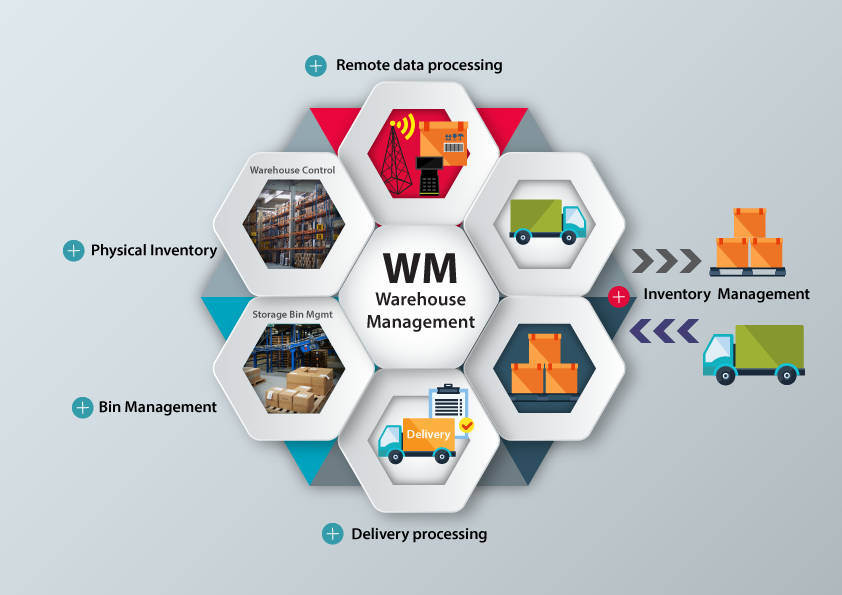2020 – the year of the pandemic has truly revolutionized the way offices and employees work! It has also set the course for future years where remote working and working from home will become the norm. The shift in our working culture led us to look for ways to improve employee efficiency, encourage them to feel like a part of the team, and keep them motivated to give their best. Among all the various software, video conferencing tools were the most sought-after by companies, both big and small.
Table of Contents
What are Video Conferencing Tools?
In some words, a video conferencing tool is a tool that allows you to communicate face-to-face with individuals. Though email is the preferred mode of communication, with remote working becoming the standard, more and more companies depend on video conferencing tools to get their job done quickly and effectively. It has been proved that face-to-face meetings are 34 times more successful than your regular email communications!
With employees working from home and following flexible schedules, the need for effective video conferencing tools has only risen and will continue to do so.
What Should You Look for in a Video Conferencing Tool?
The need for reliable and feature-packed video conferencing tools has resulted in our software market being flooded with paid and free video conferencing tools. With such endless options at your disposal, it can be difficult for you to choose the best video conferencing tool for your business. The ideal way to choose and invest would be to keep certain factors in mind, such as:
- Cost of the tool
- Number of participants
- Video feeds
- Simplicity
- User Interface
- Types of meetings
- Mobile compatibility
- Recording
- Screen sharing
- Conference room set-up
- Application integration
- Smart meetings
- Customer support
Importance of Video Conferencing tools in Remote Working
There is no doubt that video conferences have become an integral part of the working culture and will continue to remain so as we shift more and more towards remote working. More and more companies
are depending upon these video tools to get their job done efficiently and give their employees a sense of working together. A face-to-face conversation is always considered to be more effective and trustworthy. It allows the involved parties to feel more connected and optimistic about the outcome of the meetings. Since the trend has shifted to remote working, video conferencing tools are the best alternative to keeping and maintaining that personal bond with your employees and clients.
With that said, we have listed the seven best video conferencing tools which will simplify remote working in 2021 and make your employees more efficient and engaging.
1. Microsoft Teams
Microsoft Teams is one of the most popular video conferencing tools. Included in the Office 365 Business Essentials, this tool is one of the best if collaboration and integration are your key requirements. Microsoft Teams is ideal for small and large groups, and comes with a number of features, allowing its users to chat, collaborate, call, and video conference from one tool. Undoubtedly this is one of the best video conferencing tools through which employees can meet virtually and work together in real-time.
Features
- Collaboration
- Virtual meetings for any type of meetings
- Meeting controls such as hosting, muting, removing attendees, assign presenters
- Allow participants to directly join or wait in the lobby
- Screen sharing
- Set up meetings with 1,000 attendees
- Set up webinars and broadcasts for maximum 10,000 participants
- Recordings
- Live captions
- Participant List
- Raise Hand
- Customize backgrounds
- Chat
Pros
- As one of the best video conferencing tools, Microsoft Teams is known for its collaboration features, allowing you to create channels and teams to setup video calls only with the required people.
- Take advantage of bots to perform various functions, such as send automated messages, set reminders, schedule meetings, etc.
- When it comes to video conferencing tools comparison, Microsoft Teams is the frontrunner in terms of scale and size. Unlike other tools which allows up to 1,000 people, this tool supports 10,000 participants for online events.
- The seamless integration with other apps such as PowerPoint, Excel, Word, Outlook, etc., is one of the major advantages of Microsoft Teams.
- External users can join meetings without downloading the software.
- Compatible with desktop applications and mobile devices.
Cons
- There is no unified search option which makes it difficult for users to remember and search for files and documents.
- Microsoft Teams takes up a lot of space.
- This video conferencing tool offers limited flexibility in terms creating a new Team, replicating a Team, etc.
Pricing
The Free version of Microsoft Team comes with a range of features; however, you can also opt for the paid plans which offer more features.
- Office 365 Business Essentials: $5/user/month, billed annually
- Office 365 Business Premium: $12.50/user/monthly, billed annually
Quick Tip
Use Microsoft Outlook to easily create and schedule your Teams meeting.
2. Zoom
Zoom was one of the first video conferencing tools which became extremely popular, especially once remote working became the norm. This tool offers a number of features in its free version, which has further boosted its popularity. If your aim is to set up video conferences quickly and effectively, then Zoom is one of the bets options. Its immaculate video, top-notch audio, and instant sharing features are some of the USPs of Zoom meetings.
Features
- Screen sharing
- HD audio and video
- Secure Socket Layer (SSL) encryption
- Private and group chat and messaging
- Recording
- Join video conferences from different platforms (desktop/mobile)
- Breakout rooms
- Instant meetings
- Whiteboarding
- Chrome extension
- Unlimited meetings in a month
- Online support
- Host controls
Pros
- Easy-to-use in terms of setting up meetings, sending links to attendees for joining, etc.
- Free plan includes a lot of features like screen sharing, 100 participants, etc.
- The paid plans include more benefits, such as access to analytics reports, admin control, user management, cloud space, etc.
- “Touch Up My Appearance” features enables users to change their virtual background.
Cons
- The free version comes with a time limit of 40 minutes, after which the meeting feed will be cut off.
- The paid version for multiple hosts and adds-ons is expensive.
- Maximum security settings are not by default.
- The advanced security results in some features being disabled.
Pricing
Apart from the free version, you can choose between two of the paid versions.
- Pro: $149.90/yearly license
- Business: $199.90/yearly license
Quick Tip
Use the recurring meeting option if you have regularly scheduled meetings. This option will allow you to save all your call settings and it will use the same URL, thus, eliminating the need to send a new Join URL every time.
3. GoToMeeting
The next tool in our list of best video conferencing tools is GoToMeeting. Similar to the other tools, GoToMeeting also offers HD quality video, recording feature, screen sharing, and more. Provided by LogMeIn, one of the key USPs of this video conferencing tool is its mobile compatibility. Users can easily schedule and start a conference form their mobile devices, thus, enhancing their remote working flexibility.
Features
- Streaming of HD quality videos by default
- No time limit on meetings
- Screen sharing
- Chat
- Web audio
- Security
- Up to 250 participants
- 24/7 support
- Meeting transcripts
- Drawing tools
- Whiteboard
- Hand Raising
- Remote control
Pros
- Share documents in real-time.
- Complete control over remote access.
- Host large meetings with up to 250 participants.
- Record and share the meeting with anyone.
- Numerous integrations
Cons
- GoToMeeting works well only on current IT equipment and mobile devices.
- GoToMeeting only offers a 14-day free trial.
- Limited chat option.
Pricing
After taking advantage of the 14-day free trial plan, you can opt to buy their paid versions.
- Professional Plan: $12/user/monthly, billed annually
- Business Plan: $16/user/monthly, billed annually
Quick Tip
Want to limit your invite list? Just use the option Meeting Lock which can be accessed during a meeting as well.
4. Cisco Webex
Cisco Webex meetings are one of the best free video conferencing tools. The free version comes with a number of features, enabling its users to adapt easily to the remote working culture. This tool seamlessly integrates Outlook, and can be used across different platforms, such as iPad, Mac, and Windows. Users can easily setup and schedule webinars, online training, video conferences, and more. If you wish to experience more features, you can also upgrade to the paid versions.
Features
- Transport Layer Security (TLS)
- Third-party accreditations
- Screen sharing
- Recording
- Single Sign-On
- Personalized URL
- Private chat rooms
- Cloud storage
- Unlimited meetings with no time limit
- Meeting scheduler
- Virtual whiteboard
- Polls
- Participant permissions
Pros
- Simple and easy-to-use interface.
- Easy sharing of desktops, documents, other apps, etc.
- Presenter control can be easily shared.
- Can be downloaded on mobile and used.
- The free version allows up to 100 participants.
Cons
- Unlike some of the other video conferencing tools, the Call Me feature on Cisco Webex is chargeable.
- Limited customer support available in the free version.
- End-to-end encryption is not included by default.
Pricing
Apart from the free version, you can also opt for their paid versions.
- Starter Plan: $13.50/host/month
- Business Plan: $26.95/host/month
- Enterprise Plan: Case-to-case basis
Quick Tip
Use Advanced Scheduler to decide if and when to send a reminder email to the attendees.
5. BlueJeans
BlueJeans is a cloud-based video conferencing tool which enables easy collaboration with high quality audio, video, and b conferencing. This tool is compatible with different platforms and comes with amazing features like Dolby Voice+ HD video, Smart Meeting, in-built Whiteboard, and more. When you look at the video conferencing tools comparison, you might find BlueJeans slightly lacking in the features area; however, it makes up for it with its high-quality video and audio.
Features
- Compatible with Windows, Linux, Mac, Android, iOS
- Meeting recordings
- Segment highlights
- Task assignments
- Meetings with no time limit
- Create 20 breakout sessions
- Collaboration on subtasks
- Whiteboard
- Screen sharing
- Remote desktop access
- Advanced user management features for admins
Pros
- The Dolby voice audio features enhances your video conference experience.
- No need to download or install the software.
- Intelligent meeting recap.
- Paid plans include room system, calendar support, extra recoding hours.
- Free phone audio in more than 40 countries.
Cons
- There is no free plan. BlueJeans offers only a free trial period of 30 days.
- There is no option to blur backgrounds.
- Latency issues.
Pricing
After trying the 30-days free trial, you can opt for their paid versions.
- Standard Plan: $9.99/user/month, billed annually
- Pro Plan: 3.99/user/monthly, billed annually
- Enterprise: Custom pricing
Quick Tip
Not sure about the audio and video quality of your meeting? Join a test meeting to check whether everything works perfectly.
6. Google Meet
Google Meet which was earlier known as Google Hangouts Meet is a part of the G Suite. This enhanced version is specifically designed for business requirements. With Google’s security and encryption features, you do not have to worry about your data privacy. Similar to the other video conferencing tools in this list, Google Meet also has a wide range of features, which makes it ideal for businesses as well as personal use.
Features
- Modern design with built-in protection
- No download required
- Integration with other Google apps like Sheets, Google Calendar
- Screen sharing
- Live captioning
- Chat
- Pin, mute, remove participants
- Customer support
- User-friendly interface
- Complete data encryption
- Knocking option
Pros
- Google Meet is easily accessible and user-friendly.
- Access to all G Suite programs.
- Businesses who are already using G Suite can save money as they do not have to invest in an additional video conferencing tool.
- Compared to the paid versions of other video conferencing tools, Google Meet is cheaper.
- No software download required.
- Dedicated dial-in numbers which ensure the audio quality and reduces the risk of line dropping.
- Available for free to anyone who has a personal Google account.
Cons
- You need to subscribe to Google Workspace if you want to invite people who don’t have a Google account.
- Google Meet can be accessed only via Google Chrome web browser.
- Some features, such as whiteboard, poll, survey, etc., which are available in other video conferencing tools are not available in Google Meet.
Pricing
Apart from the free version, Google Meet comes with three different paid plans.
- Basic: $6/user/month
- Business: $12/user/month
- Enterprise: $25/user/month
Quick Tip
While on a video call, you can easily change your video layout and choose between Auto, Tiled, Spotlight, and Sidebar.
7. Lifesize
Lifesize is a cloud-based video conferencing tool which comes with a vast range of features. This tool is compatible with all devices and platforms. Lifesize has paid plans as well which offer different features. Most of its features are similar to what you will expect out of a modern, advanced, video conferencing tool. Lifesize is considered as the leader in customer satisfaction because of its 4K video conferencing solution – the first in the world!
Features
- Live chat
- Screen sharing
- Recording
- HD Video screening
- Automated transcripts
- Hand raising
- Virtual whiteboards
- Remote control
- Meeting scheduler
- Guest users
Pros
- Lifesize is easy-to-use and provides user-friendly interface.
- Lifesize offers 4K video experience and is available in 15 languages.
- You can avail of their tailor-made solutions for different room sizes.
- Easy collaboration with your peers.
- Free automatic updates and maintenance are provided.
- Access to detailed analytics reports.
- Seamless integration with third-party apps.
Cons
- Compared to other video conferencing tools, the paid plans of Lifesize are slightly on the higher side.
- Managing meeting rooms can be a problem if you do not monitor them actively.
- Customization of screen layouts is not possible.
- Cannot join a call simply by accessing it via a web browser.
Pricing
After using the free trial, if you wish to purchase this video conferencing tool, you have three options.
- Standard: $12.50/user/month
- Plus: $14.95/user/month
- Enterprise: Custom prices
Quick Tip
Keep your privacy intact while on a video call by opting for a virtual background.
Conclusion
Video conferencing tools have truly been a savior and as we move more and more towards a remote working culture, it is only natural to depend more on these tools. Hence, it is absolutely essential that you go through the features, pros and cons, pricing, device, and platform compatibility of each of these video conferencing tools and choose the one that matches your requirements the best. So, go ahead and find the ideal video conferencing tool for your business.






